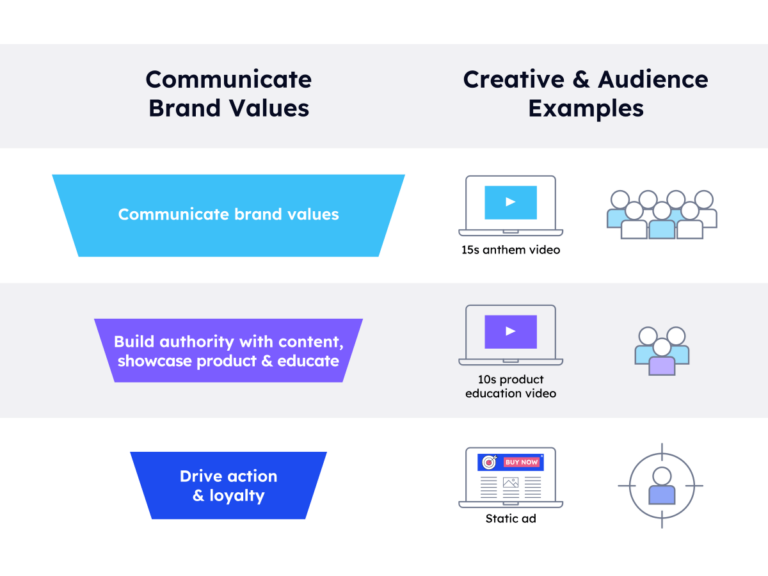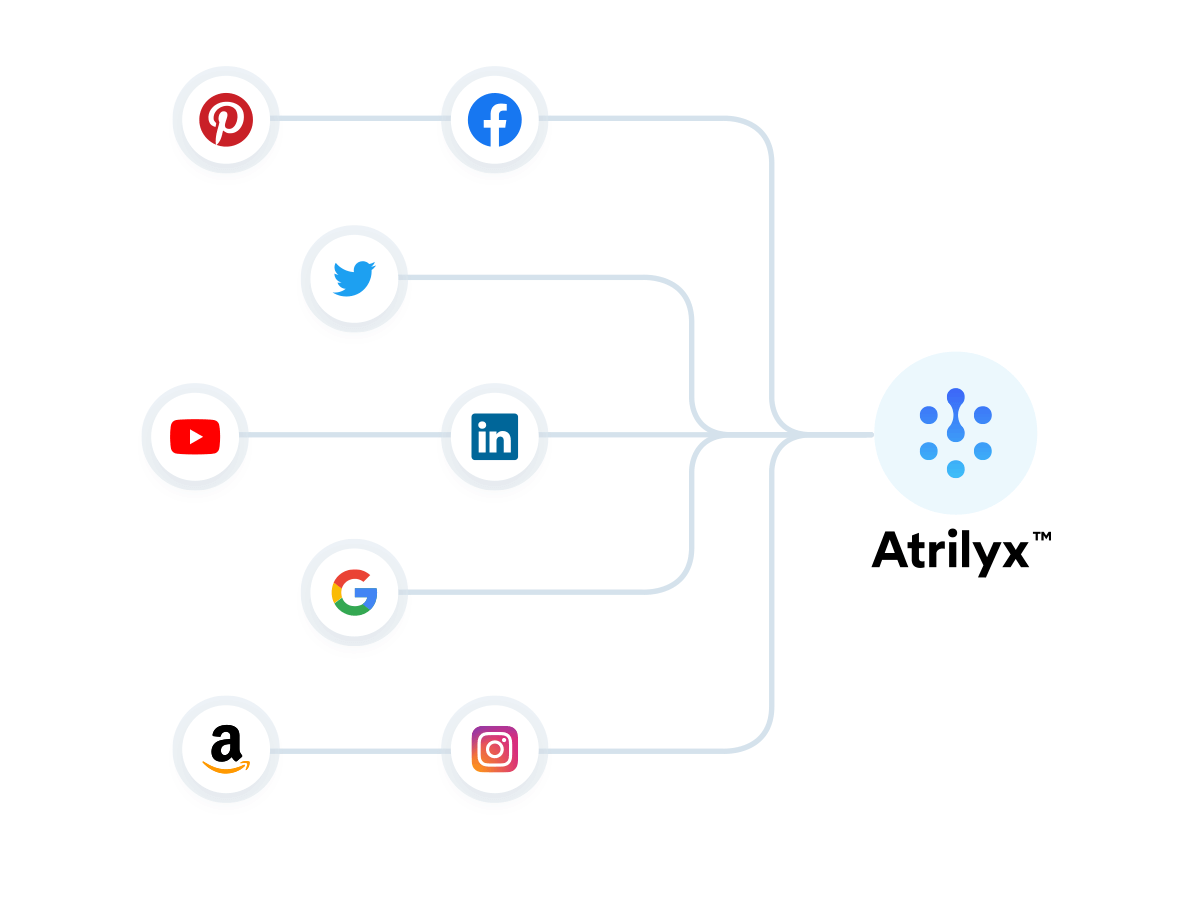It’s no secret that consumers interact with campaigns differently depending on where they are in their journey. Retargeting someone familiar with your brand requires an entirely different approach than engaging with cold traffic. Despite this, many advertisers are using the same creative strategy across their entire campaign.
In an industry like digital marketing, where competition is high and the margin for error is low, this is like trying to win a basketball game with four players instead of five. Success is still possible…but you’re putting yourself at a significant competitive disadvantage right from the start.
Here are three simple steps for ensuring that your audience segmentation and creative strategy are in full strategic alignment:
1. Define the goals of your upper, mid, and low funnel campaigns
- Upper funnel tactics are oriented towards generating awareness among members of your target audience who are not familiar with your brand and then funneling this engaged traffic towards a conversion or a mid-funnel campaign.
- Primary KPIs – Impressions and CPM
- Mid funnel campaigns continue to drive engagement while improving the consideration and intent of your target audience – hopefully they will be ready to follow through with a purchase or positive action – if not, they can be added to your retargeting pool.
- Primary KPIs – Clicks, CTR, CPC
- Low funnel campaigns are explicitly oriented towards conversions – you are retargeting an engaged audience and guiding them towards a positive action through persuasive CTAs
- Primary KPI examples
- eCommerce – Sales, CPA, AOV, Revenue
- Apps – Installs, CPI
- Other – Leads, CPL
- Primary KPI examples
2. Understand (and optimize) each audience segment
It’s important to note that not every customer is going to have the same experience or path to conversion. To ensure optimal campaign results, you need to know exactly who is interacting with your advertisements. Developing an intimate understanding of your customers at various stages of the journey makes it easier to allocate budgets to different audience segments, set realistic campaign goals, and efficiently manage expectations around performance.
3. Map your creative to specific engagement points
Here’s where having the right audience strategy in place pays off. Leveraging the insights gained from stages 1 and 2, you now need to align your creative strategy with specific touchpoints on the customer journey. This enables you to develop sequential messaging based on measurable data rather than guesswork. For example, if your data tells you that a customer engaged positively with a video but did not follow through with a purchase, consider retargeting them with a shorter video.
Ready to get started? Atrilyx puts advanced analytical insights and audience segmentation tools right at your fingertips
Our state-of-the-art measurement and attribution solution makes it easy to match your creative strategy with the right audience segment and bring data-backed, high-ROI precision to your marketing campaigns.



